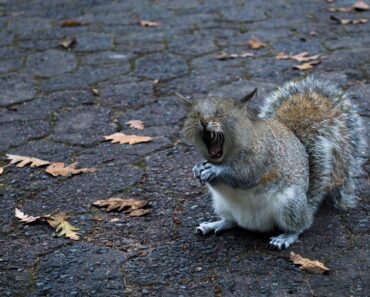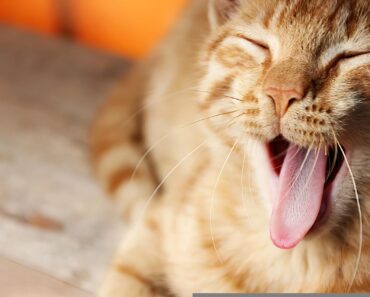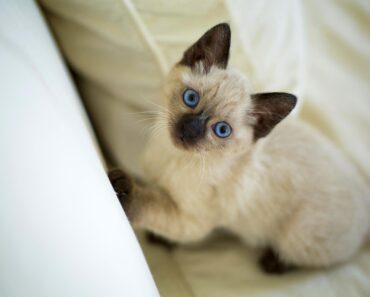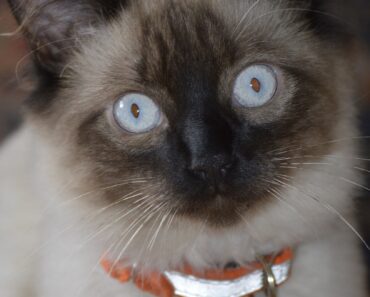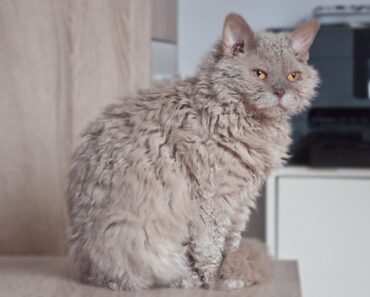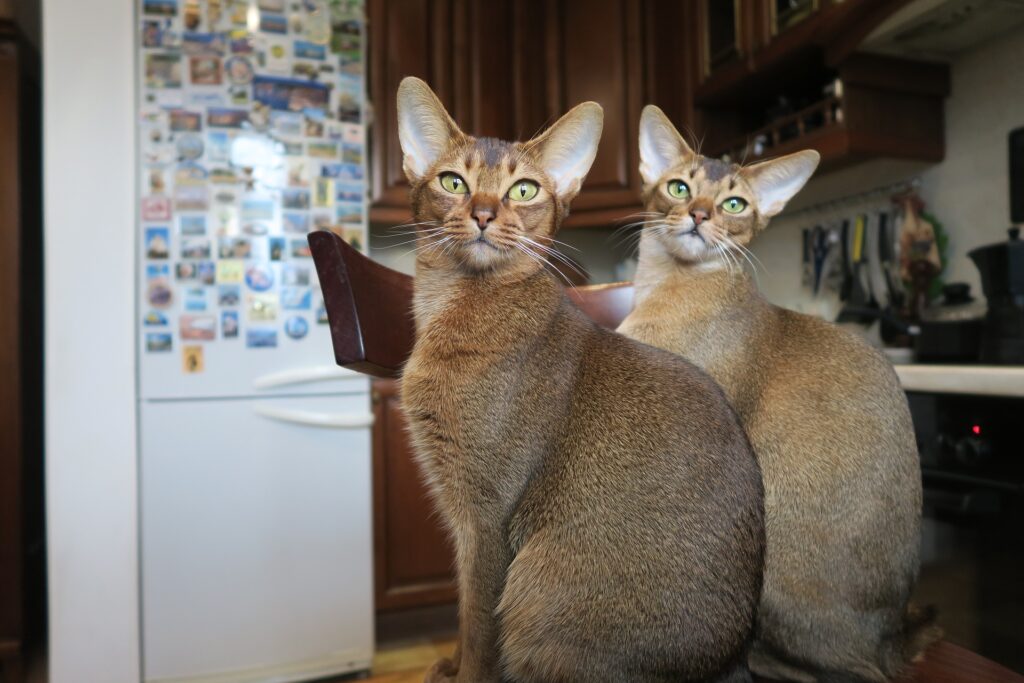
Other names: Abyssinian, Abi
The Abyssinian cat is an ancient breed. It is a loyal, playful and intelligent animal with an iridescent coat.
History of the Abyssinian cat
Abyssinian cats have been popular for a long time, but researchers have never been able to determine the exact geographic region or time of origin of the breed. Several basic hypotheses have been put forward. The first says that the animals arrived in Europe after England’s war with Abyssinia (Ethiopia) in 1868, where they originated. As basic evidence, proponents of the theory used the English book of the second half of the nineteenth century with a lithographed cat named Zulu, which was purchased by Captain Barrett-Lenarde after the end of the military campaign. Despite the apparent resemblance to modern representatives of the breed, there is no conclusive evidence that the cat pictured was actually an Abyssinian.
Other researchers have suggested that the animals were of Egyptian origin, as ancient figurines depict similar domestic animals. They may have been revered by one of the world’s most enigmatic civilizations. At the same time, genetic analyses conducted by scientists have shown that these cats have always been closely related to the animals that inhabited the Indian Ocean coast. In any case, the ancient lineage of the breed was considered extinct. Modern Abyssinian cats made their first appearance at an exhibition in Britain in 1871, winning third prize among 170 other breeds.
A detailed description of the animals was made in 1882, the initial standard was formed in 1889, and official recognition of the breed with its entry in the studbook was not expected until 1896. In the early 1900s, the first American pigs were brought to America, which would ensure the breed’s future survival. World War II all but wiped the Abyssinian off the European continent, and only a dozen cats remain in Britain. It was the American specimens that helped restore the population.
Because of the changes that cats underwent in the United States after the war, it was necessary to recognize the existence of two branches that have survived to this day: American and European. These animals managed to gain worldwide popularity, although on the territory of the CIS countries they remained exotic. According to CFA, Abyssinian cats were the second most popular shorthair breed in the United States and Europe in 2012.
The appearance of an Abyssinian cat
Abyssinian kitten
Abyssinian cats are strong and lithe, with a medium body size. Their well-developed muscles and long legs allow them to jump up to 6 times their own length. The cats are larger than female cats, but sexual demorphism is not as pronounced as in other breeds. The weight is usually between 3 and 4.5 kg. Abyssinians have a well-defined figure, a harmonious build and move with incredible grace, reminiscent of miniature cougars. The American line is more graceful and lighter than the European line.
Head
The head is well proportioned and wedge-shaped, without pronounced flattening or pointing. The line of the occiput merges smoothly with the neck. The nose is of medium length, straight and connected to the forehead by a smooth line. The chin is developed, firm and rounded. The muzzle is well defined and corresponds to the soft contours of the head. Adult males may have pronounced cheeks. A pinched, pointed muzzle with a “foxy” expression is considered unacceptable.
Eyes
The eyes of the Abyssinian cat are large and almond-shaped, with a rather wide set and a small angle. Oriental or fully round cuts are unacceptable. Bright eyes can be colored in any shade, from amber to green. Have black eyebrows regardless of the costume. A green eye tint is desirable in the presence of silver coloring. This area always has a narrow, light halo in the tone of the undercoat. The dark lines at the corners of the eyes visually continue the contour of the upper eyelid.
Ears
Muzzle for abyssinian cat
Abyssinian cat muzzle
Large, broad and slightly tilted forward, which gives it a wary look. The ears are wide at the base, tapered and rounded at the tip. The skin is covered with very short hair with a distinctive bald spot in the center (thumb print). The inside of the ear may have woolly hairs.
Neck
The neck of the Abyssinian cat is graceful and quite long.
Body
Moderately elongated, flexible, and in harmonious proportions. Body of medium size developed muscles, but not rough. Thorax rounded, back slightly arched, but the thighs should not below set.
Legs and paws
The legs are strong, long, and slender. The oval legs have small, well-shaped toes, giving the impression of a cat stretched on tiptoes.
Tail
The tail of an Abyssinian cat is fine and long, tapering to the tip.
Coat
The coat is short and hard, with a glossy sheen and characteristic tic tac tones. This silky coat is thick and soft, with a small undercoat, which clings closely to the body. The coat is longer at the back, but it is hardly noticeable.
Color
Abyssinian Blue Cat
An important characteristic of the breed is a warm, rich color with an unusual, unpatterned shimmer. This is possible due to ticking, a phenomenon in which each strand of hair has bands of light and dark shades (from 2 to 5). The soles of the hind legs, the back, and the tip of the tail are slightly darker than the rest of the body, while the inside of the legs, the belly, and the chest are lighter. The quotes are distributed fairly evenly, with pronounced light areas allowed only on the chin, lips, and around the nose. Generally accepted as 4 colors of an Abyssinian cat
- Wild (ruddie) – an orange-brown shade;
- Sorel – more reddish cat with a reddish or brownish tint;
- Blue – grayish blue with a reddish tint;
- Fauna – creamy reddish color.
Variations of the above colors “on silver” are also recognized, where the cat has a silvery-white undercoat rather than a warm, creamy one. Purple and chocolate shades are not considered the norm in all cat systems.
Possible spots
Roundhead too narrow and elongated, or round head too short, pronounced stripes on the legs, persistent pattern on the body, prominent cheeks. Important disadvantages are a very light undercoat, insufficient bristles, round eyes, small ears. Animals with flabby bodies, short legs, insufficiently long tails, and not fine eyelid rims cannot get good marks at a show.
The character of Abyssinian cats
Abyssinian cats are very active animals, eager to explore the world around them. Their playfulness is maintained throughout their lives. Despite their appearance as wild predators, these cats are well-balanced, intelligent and clever, and very affectionate towards their family members. Abyssinians do not show aggression, do not usually show their claws during play, and are patient with children. Cats are constantly patrolling their territory looking for interesting activities and like to climb as high as possible to observe – give them this opportunity.
Representatives of this breed are neat and respect the rules set by their owners: they will not tear furniture (especially if there is a scratching post), will not straddle curtains and will not knock over flower pots. But sharp and especially fragile objects should be removed, and windows on upper floors should be closed or protected with special grills – while playing, the cat could hurt itself or make damage.
Abyssinian cats are independent in character and dignity and will not tolerate being treated disrespectfully or sitting on their hands all the time. Their temperament is quite similar to that of dogs: they are loyal and play happily, picking up objects thrown by their owners. Abyssinian cats are good parents, so they don’t need help giving birth, nursing, or raising their young. Intelligent and elegant pets need human attention, contact with their owners. Without it, an animal can become depressed and ill.
Care and Health
Abyssinians are easy to care for, but their health needs to be taken care of so that they get sick less often and live longer.
Getting to know your new home
When you bring the kitten into your home, remember that it is very shy. So you’ll need to slowly familiarize her with the environment, family members, and pets. Be attentive to it, but don’t overload it with games, so that it has time to grow stronger and get used to its new surroundings. Since the pet will be exploring the house on its own, it’s worth providing a comfortable bed and a separate scratching post.
Hygiene
Abyssinians easily get used to a litter box with natural litter or a toilet. If you train your cat to do water procedures at an early age, you won’t have any problems with bathing in the future – most breeding cats love to swim. Wash your pet once per shedding season and not too often. Use a special shampoo for short-haired cats (no conditioner). After bathing, wipe the cat thoroughly and let it dry.
An Abyssinian cat’s teeth need to be cleaned because of its tendency to form plaque and tartar. Special attention should be given to cleaning the ears.
Coat
A short, thick coat requires little maintenance. Once a week brushing is sufficient. Its molt is fast and uncomfortable.
Nutrition
Abyssinians are happy to eat special foods or foods prepared by you. If this is the case, you should consult your veterinarian who will prescribe additional vitamins and food supplements. Pay a little attention to his diet so that he is not overfed. Until your kitten is one year old, you should provide three meals a day of kitten food. Preferably use the same brands that the breeder uses to feed the kittens. After one year of age, you can switch to adult cat products, feeding a slightly larger portion twice a day.
Meat and fish should preferably be cooked, and raw food should only be fed if you are sure of its quality and after it has been cut into small pieces. Many Abyssinians will happily eat fruits and vegetables. You’ll find out for yourself, over time, which ones your cat prefers.
Health and diseases of the Abyssinian cat
In general, Abyssinians are healthy and lively animals. If diseases occur, they are most often due to poor nutrition or genetic problems. For example, in some lines retinopathy of the retina develops, because of which the Abyssinian cat becomes completely blind at the age of 5 years. This disease can be detected beforehand in a kitten, and the responsible breeders eliminate these individuals. In rare cases, anemia due to pyruvate kinase deficiency may develop with age. Renal amyloidosis is not uncommon, but it can have serious health consequences for the animal. The breed is prone to hip dysplasia and patella luxation. Teeth should be brushed regularly, making sure there is no “teething”. Take your Abyssinian to the vet periodically for check-ups and do not self-medicate. With proper care, the cat can live 15 to 20 years.
How to choose a kitten
Only go to reputable breeders or large catteries. You should get a kitten that is at least three months old. At this stage, the seller has time to vaccinate the Abyssinian, get it used to the litter box, and feed it independently. In addition, the baby will be psychologically stronger and ready for a new home. Removing the puppy at an early age puts his physical and emotional health at great risk.
Make sure that the breeder provides all health certificates of the animal, a pedigree documenting the absence of inbreeding. A kitten should be playful, easy to talk to, and not too shy. A shiny coat, a confident gait, no palpable abdominal hernias, and no discharge from the eyes or ears are the main characteristics of a healthy Abyssinian cat.

